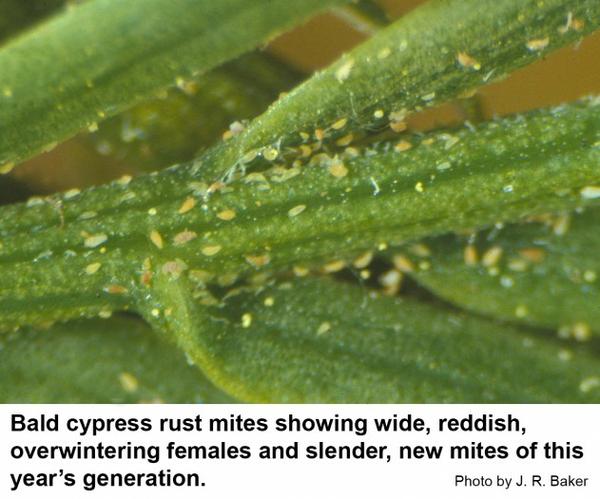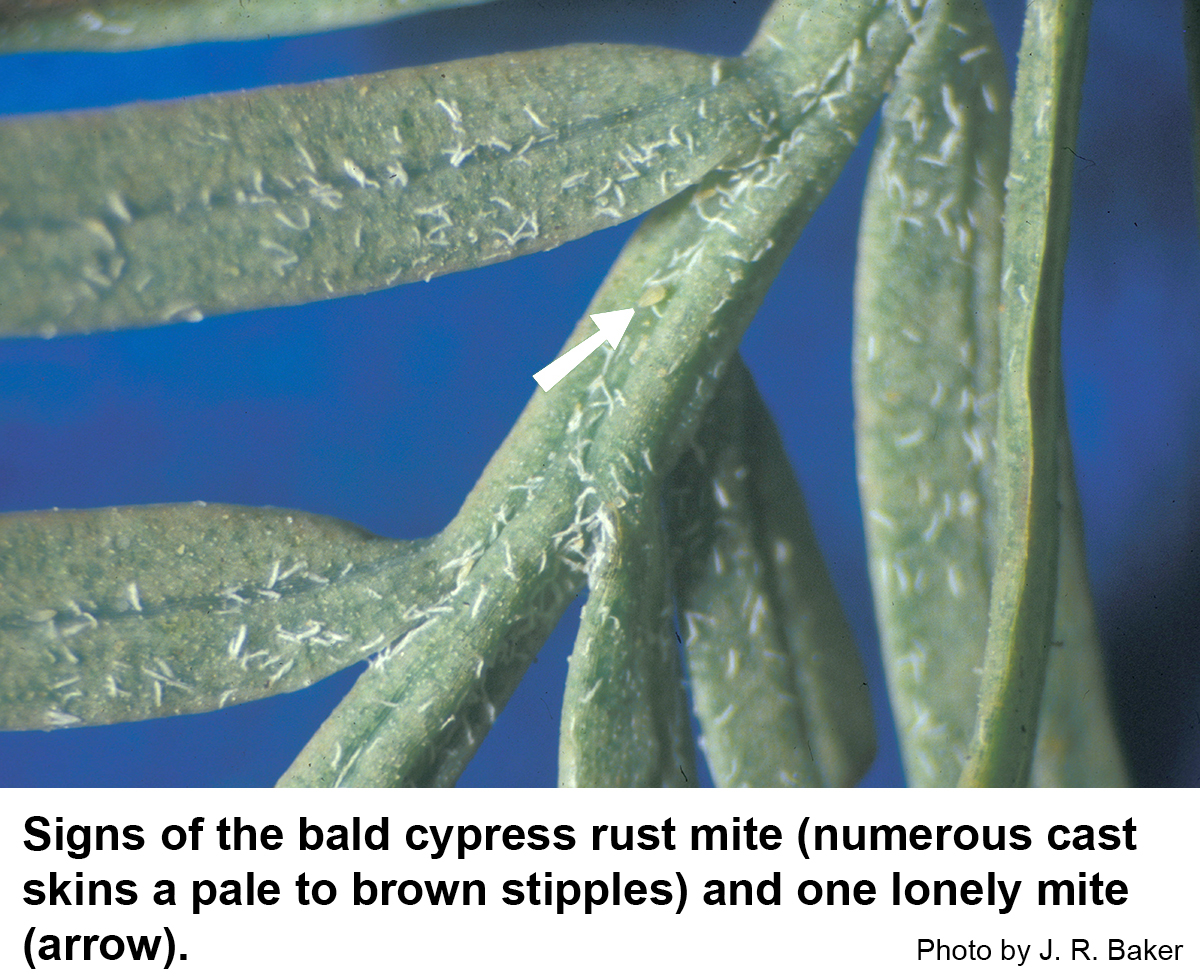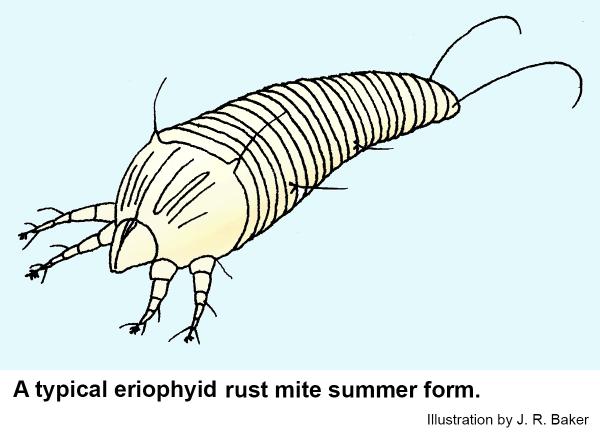Bald Cypress Rust Mite
The bald cypress rust mite, Epitrimerus taxodii, is also known as the swamp cypress rust mite. It attacks only bald cypress trees. This mite overwinters as plump, reddish females tucked into the crevices of the bark. After the new leaves form, overwintering females crawl out to feed and lay eggs from which hatch pale, slender mites -- males and females -- that infest the needles during the growing season. Rust mites rasp through the needle surface with their microscopic, scissor-like mouthparts and extract the cell contents below. As warm weather arrives, the mites reproduce rapidly until thousands can be found on a single leaf. Just visible with a 10-power hand lens, their numerous, white, cast skins are the easiest diagnostic sign to see. The summer mites are cream to very light brown. The last generation on the needles develops into the all-female, reddish, overwintering form.
Bald Cypress Rust Mite on Bald Cypress
Bald cypress rust mites feed only on bald cypress. Heavy populations cause the needles of the leaves become yellowish and then reddish brown. Trees heavily damaged early in the growing season should be treated (if practical).
Residential Recommendation
Unfortunately, bald cypress is very sensitive to horticultural oils. If you control this mite with oils, you'll do more damage to the tree than the mites! Try carbaryl (Sevin) or some other miticide to knock down this mite. Thorough coverage of the foliage is necessary. Unless these rust mites are completely out of hand, the Missouri Botanical Garden recommends not treating at all because pesticides also kill natural predators of other bald cypress pests.
References
- An Illustrated Guide to Plant Abnormalities Caused by Eriophyid Mites in North America. Keifer, H. H., et al. 1982. USDA ARS Agr. Handbook No. 573. 178 pages.
- Bald Cypress Rust Mite. Nixon, P. and D. Shetlar. 1998. Home, Yard & Garden Pest Newsletter. Univ. Illinois Extension.
- Baldcypress Rust Mite. Smith, S. and J. Pavel. 2022. University of Arkansas System Division of Agriculture.
- Extension Plant Pathology Publications and Factsheets
- Horticultural Science Publications
- North Carolina Agricultural Chemicals Manual
For assistance with a specific problem, contact your local N.C. Cooperative Extension Center
This Factsheet has not been peer reviewed.
Publication date: Nov. 9, 2013
Reviewed/Revised: Oct. 27, 2023
Recommendations for the use of agricultural chemicals are included in this publication as a convenience to the reader. The use of brand names and any mention or listing of commercial products or services in this publication does not imply endorsement by NC State University or N.C. A&T State University nor discrimination against similar products or services not mentioned. Individuals who use agricultural chemicals are responsible for ensuring that the intended use complies with current regulations and conforms to the product label. Be sure to obtain current information about usage regulations and examine a current product label before applying any chemical. For assistance, contact your local N.C. Cooperative Extension county center.
N.C. Cooperative Extension prohibits discrimination and harassment regardless of age, color, disability, family and marital status, gender identity, national origin, political beliefs, race, religion, sex (including pregnancy), sexual orientation and veteran status.




